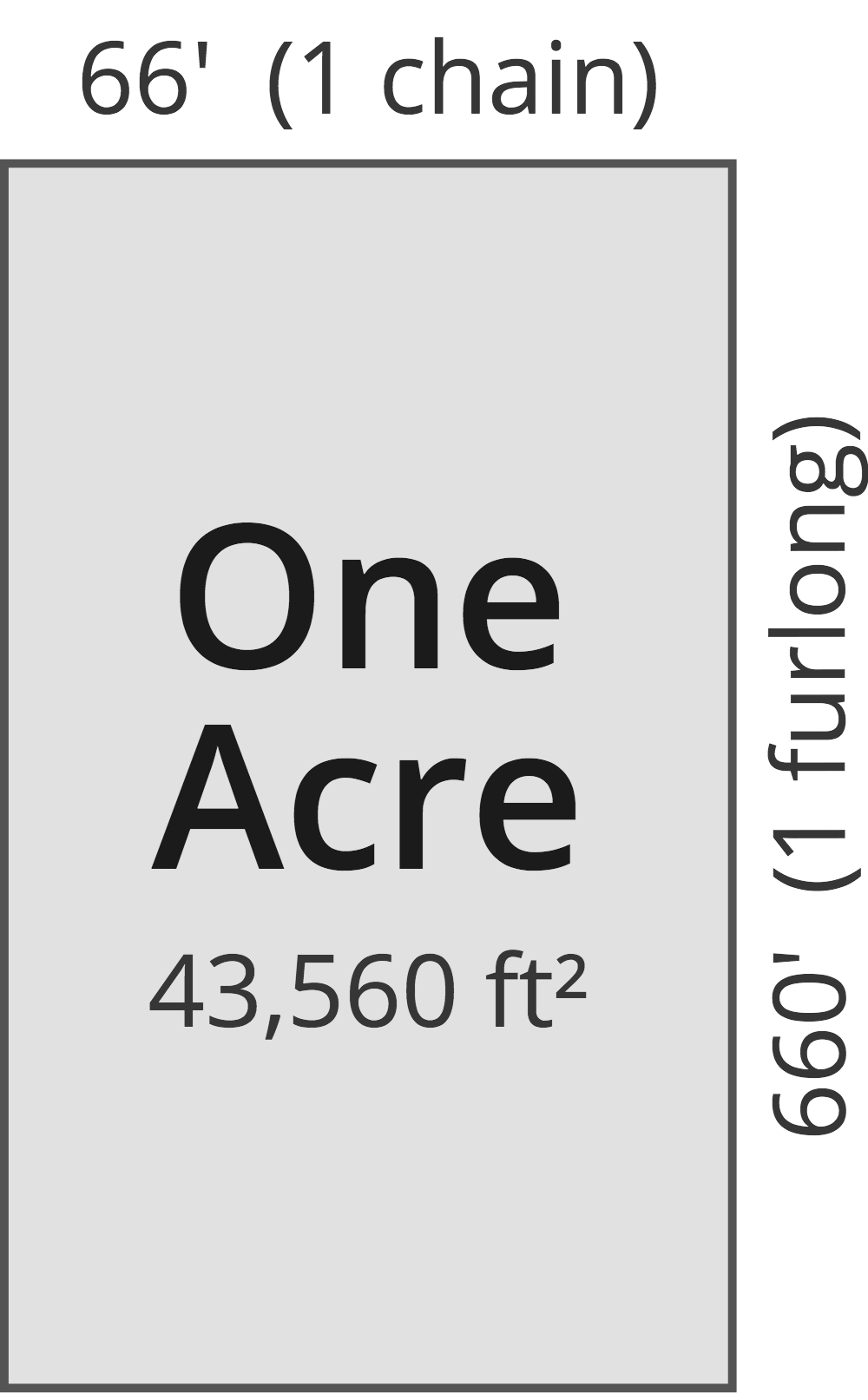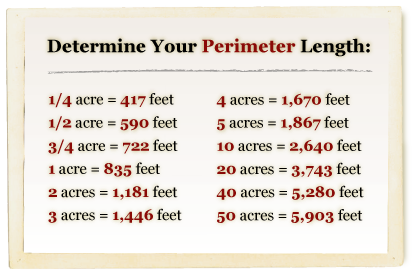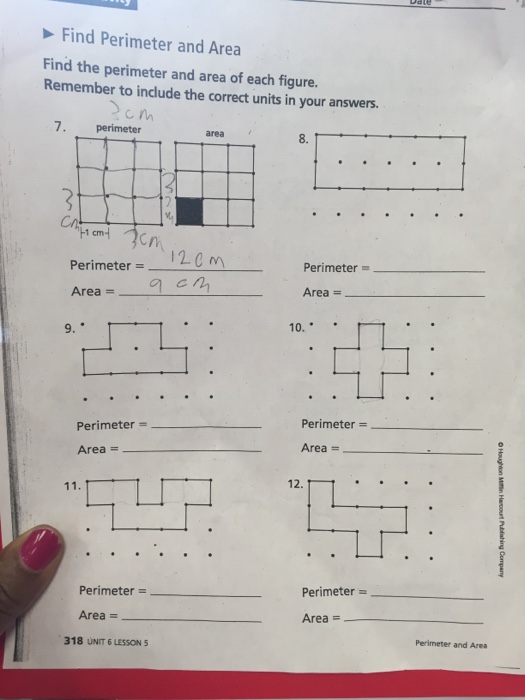Topic acre perimeter in feet: Understanding the perimeter of an acre in feet is crucial for land measurement and planning. Whether you're evaluating a square, rectangular, or irregularly shaped plot, knowing how to calculate and interpret the perimeter helps in various real-world applications. Discover the essentials of acre perimeter calculations and enhance your knowledge of land dimensions.
Table of Content
- Understanding the Perimeter of an Acre in Feet
- Introduction to Acre and Its Perimeter
- Standard Dimensions of an Acre
- Perimeter Calculation for Various Shapes of an Acre
- 1. Rectangular Acre Perimeter Calculation
- 2. Circular Acre Perimeter Calculation
- 3. Irregular Shaped Acre Perimeter Calculation
- Real-world Applications and Examples
- Importance of Acre Perimeter in Land Measurement
- Factors Influencing the Perimeter of an Acre
- Conclusion: Understanding Acre Perimeter in Land Planning
- YOUTUBE:
Understanding the Perimeter of an Acre in Feet
An acre is a unit of area commonly used in the United States and other countries to measure large plots of land. While the concept of an acre is straightforward, its perimeter can vary depending on the shape of the land.
Standard Acre Dimensions
An acre is traditionally defined as:
- 4,840 square yards
- 0.4047 hectares
Calculating the Perimeter of a Square Acre
For a square acre, the calculation is simple. Since the area of a square is given by \( \text{side length}^2 \), we can find the side length by taking the square root of 43,560 square feet:
\[ \text{Side length} = \sqrt{43,560} \approx 208.71 \text{ feet} \]
Therefore, the perimeter \( P \) of a square acre is:
\[ P = 4 \times \text{Side length} = 4 \times 208.71 \approx 834.84 \text{ feet} \]
Perimeter for Different Shapes
If the acre is not a perfect square, the perimeter can be different. Here are examples for other common shapes:
Rectangular Acre
For a rectangular acre, if one dimension is longer than the other, we can calculate the perimeter using the formula:
\[ P = 2 \times (\text{length} + \text{width}) \]
Given an acre has 43,560 square feet, if the length is \( L \) and width is \( W \), then:
\[ L \times W = 43,560 \text{ square feet} \]
Assuming a length of 300 feet and a width of 145.2 feet, the perimeter would be:
\[ P = 2 \times (300 + 145.2) = 2 \times 445.2 = 890.4 \text{ feet} \]
Circular Acre
For a circular acre, we use the area formula \( A = \pi r^2 \) to find the radius \( r \) and then the circumference \( C \) for the perimeter:
\[ r = \sqrt{\frac{43,560}{\pi}} \approx 117.75 \text{ feet} \]
Thus, the perimeter or circumference \( C \) is:
\[ C = 2 \pi r \approx 2 \times 3.1416 \times 117.75 \approx 739.57 \text{ feet} \]
Conclusion
The perimeter of an acre varies based on its shape. A square acre has a perimeter of approximately 835 feet, but different shapes like rectangles or circles will have different perimeters. Understanding these variations is important in land measurement and planning.

READ MORE:
Introduction to Acre and Its Perimeter
An acre is a commonly used unit of area measurement, particularly in the United States, for land and property. Understanding the perimeter of an acre is essential for various applications in agriculture, real estate, and land development. The concept of an acre and its perimeter can be explored through the following points:
- Definition: An acre is defined as an area of 43,560 square feet. This measurement can be applied to any shape of land, but it is often visualized as a square.
- Historical Context: The acre has its roots in the Middle Ages and was originally conceived as the amount of land that could be plowed in one day by a yoke of oxen.
- Standard Shape and Perimeter: The most straightforward way to visualize an acre is as a square. In this case, each side would be approximately 208.71 feet, leading to a total perimeter of:
\[ \text{Perimeter} = 4 \times 208.71 \approx 834.84 \text{ feet} \] - Different Shapes and Their Perimeters: Acres can come in various shapes, including rectangles, circles, and irregular polygons. Each shape will have a different method for calculating the perimeter:
- Rectangular Acre: For a rectangle, the perimeter is calculated as:
\[ \text{Perimeter} = 2 \times (\text{Length} + \text{Width}) \] - Circular Acre: For a circle, the perimeter, known as the circumference, is calculated as:
\[ \text{Circumference} = 2 \times \pi \times \text{Radius} \] - Irregular Shape: For an irregularly shaped acre, the perimeter can be measured by summing the lengths of all the sides.
- Rectangular Acre: For a rectangle, the perimeter is calculated as:
- Real-World Applications: Knowing the perimeter of an acre is crucial for fencing, land division, and property assessments. It helps in determining boundary lengths and planning for infrastructure development.
In summary, understanding the concept of an acre and how to calculate its perimeter is fundamental for effective land use and management. Whether you are dealing with a simple square plot or a more complex shape, these calculations are vital for accurate measurements and planning.
Standard Dimensions of an Acre
An acre is a unit of area commonly used in the United States and other countries that use the Imperial system. The standard dimensions of an acre are:
- 1 acre = 43,560 square feet
- 1 acre = 4,840 square yards
- 1 acre = 0.4047 hectares
- 1 acre = 4,047 square meters
While an acre can take any shape, the most common shape referenced is a square. The dimensions of a square acre are:
Let \( A \) be the area of the acre:
\[ A = 43,560 \, \text{sq ft} \]
For a square-shaped acre:
The side length \( s \) of the square can be calculated as:
\[ s = \sqrt{A} \]
\[ s = \sqrt{43,560} \]
\[ s \approx 208.71 \, \text{ft} \]
Therefore, a square acre has side lengths of approximately 208.71 feet.
Additionally, here are the dimensions of a rectangular acre for some common aspect ratios:
| Aspect Ratio | Length (ft) | Width (ft) |
|---|---|---|
| 1:1 (Square) | 208.71 | 208.71 |
| 2:1 | 435.6 | 100 |
| 4:1 | 871.2 | 50 |
Understanding these standard dimensions helps in visualizing and calculating the perimeter of different acre shapes.
Perimeter Calculation for Various Shapes of an Acre
The perimeter of an acre varies depending on its shape. Here, we will explore the perimeter calculations for different shapes: rectangular, circular, and irregular.
1. Rectangular Acre Perimeter Calculation
A common shape for land parcels is a rectangle. An acre is 43,560 square feet. To calculate the perimeter of a rectangular acre:
- Determine the dimensions of the rectangle (length and width) such that the product of the length and width equals 43,560 square feet.
- Use the formula for the perimeter of a rectangle: \( P = 2(l + w) \)
For example, if the length is 660 feet and the width is 66 feet:
- Perimeter: \( P = 2(660 + 66) = 2(726) = 1452 \) feet
2. Circular Acre Perimeter Calculation
A circle is a less common but possible shape for an acre. The area of a circle is given by \( \pi r^2 = 43,560 \) square feet. To find the perimeter (circumference) of a circular acre:
- Calculate the radius \( r \) using the formula: \( r = \sqrt{\frac{43,560}{\pi}} \)
- Then, use the formula for the circumference of a circle: \( C = 2\pi r \)
For example:
- Radius: \( r = \sqrt{\frac{43,560}{\pi}} \approx 117.75 \) feet
- Circumference: \( C = 2\pi \times 117.75 \approx 739.58 \) feet
3. Irregular Shaped Acre Perimeter Calculation
For an irregularly shaped acre, the perimeter calculation is more complex and depends on the specific dimensions and shape of the boundary. Here are the steps:
- Divide the irregular shape into regular shapes (e.g., triangles, rectangles).
- Calculate the perimeter of each regular shape.
- Add the perimeters of the regular shapes to get the total perimeter.
This process often requires detailed measurements and possibly the use of surveying tools or software to achieve accurate results.
1. Rectangular Acre Perimeter Calculation
To calculate the perimeter of a rectangular acre, we start with the area of an acre, which is 43,560 square feet. The perimeter calculation depends on the dimensions of the rectangle. Here are the steps to calculate the perimeter for a rectangular acre:
Step-by-Step Calculation:
- Determine the length and width of the rectangle.
- Calculate the perimeter using the formula:
\( \text{Perimeter} = 2 \times (\text{Length} + \text{Width}) \)
Example Calculations:
- Square-shaped acre:
- Since a square has equal sides, each side of a square acre is the square root of 43,560 square feet.
\( \text{Side Length} = \sqrt{43,560} \approx 208.71 \text{ feet} \)
- Therefore, the perimeter is:
\( \text{Perimeter} = 4 \times 208.71 \approx 834.84 \text{ feet} \)
- Rectangular acre (example dimensions):
- If the length is 440 feet and the width is 99 feet:
\( \text{Perimeter} = 2 \times (440 + 99) = 2 \times 539 = 1078 \text{ feet} \)
- If the length is 330 feet and the width is 132 feet:
\( \text{Perimeter} = 2 \times (330 + 132) = 2 \times 462 = 924 \text{ feet} \)
It’s important to note that the perimeter will vary depending on the specific dimensions of the rectangle. For other possible dimensions, use the same method to calculate the perimeter.

2. Circular Acre Perimeter Calculation
Calculating the perimeter of a circular acre involves understanding both the area of the acre and the properties of a circle. Here's a step-by-step guide to calculate the perimeter (circumference) of a circular acre:
-
First, recognize that an acre is defined as 43,560 square feet.
-
Next, use the formula for the area of a circle to find the radius:
Where \( A \) is the area (43,560 square feet) and \( r \) is the radius in feet. Solving for \( r \), we get:
Plugging in the values:
-
Now, use the radius to find the circumference (perimeter) of the circle:
Substituting the radius value:
Therefore, the perimeter (circumference) of a circular acre is approximately 739.9 feet.
3. Irregular Shaped Acre Perimeter Calculation
Calculating the perimeter of an irregularly shaped acre can be challenging due to its non-uniform boundaries. Here is a detailed step-by-step guide to help you determine the perimeter of such a plot:
Step-by-Step Guide
-
Divide the Plot into Simpler Shapes: Start by breaking down the irregular plot into smaller, manageable geometric shapes such as triangles. This can be done by drawing lines between various points along the boundary of the plot.
-
Measure the Length of Each Segment: Use a tape measure or a surveyor’s wheel to measure the length of each side of the smaller shapes. Ensure that all measurements are accurate and recorded in the same units (preferably feet).
-
Calculate the Perimeter of Each Shape: Sum the lengths of the sides of each individual shape to find its perimeter. For example, if you have divided the plot into triangles, add up the lengths of the three sides for each triangle.
-
Add the Perimeters: Add the perimeters of all the individual shapes to get the total perimeter of the irregular plot.
-
Use Specialized Tools: Consider using online tools or apps designed to calculate the area and perimeter of irregular shapes by tracing the boundary on a digital map. These tools can enhance accuracy and reduce the complexity of manual calculations.
Example Calculation
Here’s an example to illustrate the process:
- Suppose the irregular plot is divided into three triangles with the following side lengths:
- Triangle 1: sides 50 ft, 60 ft, and 70 ft
- Triangle 2: sides 40 ft, 80 ft, and 90 ft
- Triangle 3: sides 30 ft, 40 ft, and 50 ft
- Calculate the perimeter of each triangle:
- Triangle 1: 50 + 60 + 70 = 180 ft
- Triangle 2: 40 + 80 + 90 = 210 ft
- Triangle 3: 30 + 40 + 50 = 120 ft
- Add the perimeters of all triangles to get the total perimeter:
- Total Perimeter: 180 + 210 + 120 = 510 ft
Tips for Accuracy
Precision in Measurement: Ensure that all measurements are as precise as possible to avoid errors in the final calculation.
Use of Technology: Leverage GPS tools or mapping software to assist in accurately tracing and measuring the plot boundaries.
Consult a Surveyor: For highly irregular plots or when precise measurements are critical, consider consulting a professional surveyor.
By following these steps, you can accurately calculate the perimeter of an irregularly shaped acre, ensuring effective land measurement and planning.
Real-world Applications and Examples
Understanding the perimeter of an acre is crucial for various practical applications in everyday life. Here are some real-world examples where knowing the perimeter is essential:
-
Fencing and Landscaping
When planning to enclose a piece of land, knowing the perimeter helps determine the amount of fencing material needed. For example, to fence a rectangular garden or an acre of land, you would calculate the perimeter to ensure you purchase the right length of fencing material.
-
Construction and Building Projects
In construction, the perimeter measurement is used to determine the amount of materials needed for building foundations, walls, and other structures. For instance, calculating the perimeter of an acre can help estimate the quantity of lumber or concrete required for a boundary wall.
-
Surveying and Land Division
Surveyors use perimeter calculations to define property boundaries accurately. This is essential in legal documentation and in avoiding disputes over land ownership. The perimeter helps in mapping out the exact dimensions and layout of the land.
-
Gardening and Agricultural Planning
Farmers and gardeners need to know the perimeter of their plots to plan the layout of crops, irrigation systems, and protective fencing against wildlife. This ensures efficient use of space and resources.
-
Urban Planning and Infrastructure Development
City planners and engineers use perimeter measurements to design roads, parks, and other public spaces. The perimeter helps in calculating the materials needed for paving, curbing, and other infrastructural elements.
-
Environmental Protection
In conservation efforts, knowing the perimeter of protected areas helps in managing and monitoring these regions effectively. It aids in planning patrolling routes, setting up boundary markers, and ensuring the protection of wildlife habitats.
-
Real Estate and Property Valuation
Real estate professionals use perimeter measurements to appraise property value accurately. The perimeter helps in providing detailed property descriptions and in marketing the land to potential buyers.
These examples illustrate the importance of understanding and accurately calculating the perimeter of an acre in various fields, from agriculture and construction to urban planning and environmental protection.
Importance of Acre Perimeter in Land Measurement
Understanding the perimeter of an acre is essential for various aspects of land management, agriculture, and real estate. Here are several reasons why knowing the perimeter of an acre is important:
- Resource Allocation: Calculating the perimeter of an acre helps in planning the allocation of resources such as fencing, irrigation systems, and crop planting. Efficient use of resources can maximize agricultural yield.
- Irrigation Planning: Knowing the perimeter is vital for determining the length of irrigation pipelines and the placement of sprinklers. Proper irrigation is crucial for maintaining crop health and maximizing yield.
- Crop Layouts: Accurate perimeter measurements assist farmers in designing crop layouts, ensuring optimal spacing between rows and plants. This promotes healthy growth and easier harvesting.
- Property Boundaries: Precise knowledge of acre boundaries helps prevent encroachments and land disputes, safeguarding property rights and avoiding legal issues.
- Crop Rotation: Effective crop rotation requires meticulous planning of acre usage. Perimeter calculations aid in deciding which crops to plant in specific areas to maintain soil health.
- Land Valuation: The perimeter of an acre plays a role in determining the value of agricultural land. Accurate measurements are essential for fair land appraisals and transactions.
- Zoning Regulations: Local zoning laws often specify minimum acreage requirements for certain activities. Accurate acre perimeter data ensures compliance with these regulations, facilitating smoother planning processes.
Overall, understanding the perimeter of an acre is crucial for efficient land management, improved agricultural practices, and sustainable development. It helps farmers, planners, and developers make informed decisions that benefit both the land and its users.

Factors Influencing the Perimeter of an Acre
The perimeter of an acre can vary significantly based on several factors. Understanding these factors is crucial for accurate land measurement and planning. Below are some key factors that influence the perimeter of an acre:
- Shape of the Acre: The most significant factor affecting the perimeter is the shape of the acre. While a square acre has the smallest possible perimeter, other shapes, especially irregular ones, can have much larger perimeters.
- Dimensions: Different dimensions of a rectangular acre can result in different perimeters. For example:
- A square acre (208.71 feet on each side) has a perimeter of 834.84 feet.
- A rectangular acre of 220 feet by 198 feet has a perimeter of 836 feet.
- Other rectangular dimensions such as 440 feet by 99 feet can lead to a perimeter of 1,078 feet.
- Topography: The natural features of the land, such as slopes, hills, and valleys, can influence the actual measured perimeter of an acre when taking elevation changes into account.
- Land Use: How the land is used can also impact its perimeter. For instance, agricultural lands might have boundary adjustments for irrigation systems, which can alter the perimeter.
- Man-Made Structures: The presence of buildings, fences, and other structures can modify the land's perimeter, especially if these structures are built along the boundary lines.
These factors highlight the importance of considering various elements when calculating or measuring the perimeter of an acre for different purposes such as land division, fencing, or development projects.
Conclusion: Understanding Acre Perimeter in Land Planning
Understanding the perimeter of an acre is crucial for effective land planning and utilization. The perimeter provides essential data for various applications in agriculture, real estate, and urban development. Here's a comprehensive look at its importance:
- Agricultural Efficiency: Farmers use perimeter calculations to optimize resource allocation, such as fencing and irrigation. This ensures that every part of the land is used effectively, promoting maximum yield and sustainable farming practices.
- Real Estate Development: Accurate perimeter measurements are vital for property subdivision, valuation, and legal documentation. Developers rely on these measurements to design plots, streets, and infrastructure that comply with zoning regulations and maximize land use.
- Urban Planning: In urban environments, understanding acre perimeters helps planners create organized communities. It aids in designing residential and commercial zones, public spaces, and essential services, ensuring harmonious and sustainable development.
- Environmental Conservation: Perimeter data is used to delineate protected areas and wildlife habitats. This is crucial for conservation efforts, helping to maintain biodiversity and protect ecosystems.
- Infrastructure Projects: Accurate perimeter calculations are necessary for planning and constructing infrastructure such as roads, utilities, and drainage systems. These projects must fit within the designated land areas and serve the community efficiently.
In summary, the perimeter of an acre is a fundamental aspect of land measurement that influences various aspects of land use and development. Whether in agriculture, real estate, or urban planning, understanding and utilizing acre perimeter data ensures efficient, sustainable, and legally compliant land management. This knowledge empowers landowners, developers, and planners to make informed decisions, ultimately leading to better-managed and more productive land.
Chu vi của 1 mẫu Anh là bao nhiêu feet?
READ MORE:
Video này giải thích cách tính chu vi của 1/2 mẫu Anh bằng feet, phù hợp cho những ai muốn hiểu rõ hơn về các đơn vị đo lường đất đai.
Chu vi của 1/2 mẫu Anh là bao nhiêu? - Video Giải Thích








